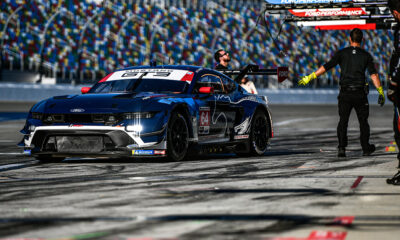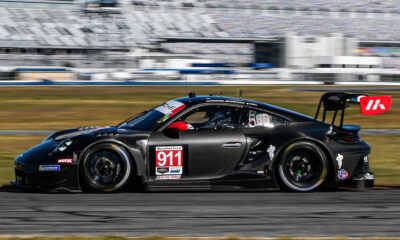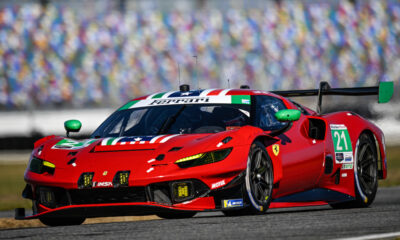
Photo: John Dagys
IMSA’s tech chief Geoffrey Carter has insisted that this week’s test at Daytona is not a Balance of Performance test, but rather an opportunity to evaluate different configurations in a more structured environment.
The sanctioning body has invited all new or modified cars for the 2018 WeatherTech SportsCar Championship season to the two-day test, which kicks off on Tuesday.
A total of 18 cars, including Team Penske’s new Acura ARX-05 DPi, the revised Mazda RT24-P, BMW’s new M8 GTE, as well as Evo kits from various LMP2 and GT constructors and manufacturers, are all making its public debuts.
Carter, the Senior Director of Technical Regulations and Compliance at IMSA, said the invited teams have been given specific test plans that are unique to each car and involves multiple variables.
He said it’s not like a BoP test, which is typically undertaken by a single control driver and with set variables for all cars.
“A lot of people are saying it’s a BoP test. It’s not a BoP test; it’s an opportunity for us to gather some data in a structured environment,” Carter told Sportscar365.
“For all the cars, we’ve issued different run plans that include anything from weight to power and wing sweeps, boost curves.
“We’ll let them go run and just evaluate what we’ll see.”
Carter said its prescribed test plan will be drawn out over the two days and not just limited to a specific session.
The data compiled in the 11 hours of total track time for WeatherTech Championship cars will be correlated with existing data collected in both wind tunnel sessions and dyno testing at Windshear and NASCAR’s R&D center, respectively.
Nearly a dozen engines have been put through the dyno in the last month.
Compared to last year’s December test, which provided the first glimpse of DPi machinery but in an incomplete form, Carter said this week’s test has a more structured format in order for IMSA to meet its objectives.
“We’re trying to spread it out, so teams have an adequate opportunity to get a baseline within the current BoP,” he said. “We’re giving them a reasonable run plan.”
Revised GTLM, GTD Cars Also Being Evaluated
In addition to the new or updated machinery in the Prototype ranks, IMSA has also requested the presence of all GT cars that have opted for Evos next year.
It includes the Ferrari 488 GTE, Lexus RC F GT3 and Porsche 911 GT3 R, which are all present.
Despite remaining under the same homologation for 2018, Riley Team AMG is running one of its Mercedes-AMG GT3s to evaluate potential different components and configurations.
Carter described it as an “interesting car” for IMSA but declined to provide specific objectives for its test.
“We’re committed to trying to get it in the box, in a little different way,” he said. “We’re working with [Mercedes-AMG]. They’ve been very good with us.
“It’s no secret that the car is super heavy, it struggles on top speed, so we want to try and understand it a bit more.”
Carter stressed that any potential changes to the Mercedes-AMG would be made within the car’s existing homologation.
Both the Ferrari 488 GT3 and BMW M6 GT3, which also have Evos, are not here, as the Ferrari’s kit is incomplete and IMSA awaits to see if a team will run a BMW in the series next year.
It’s understood Turner Motorsport is still working to be on the grid next year as it searches for funded drivers.























